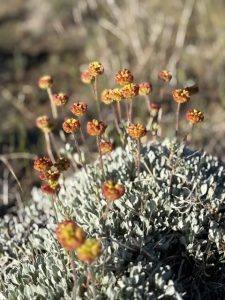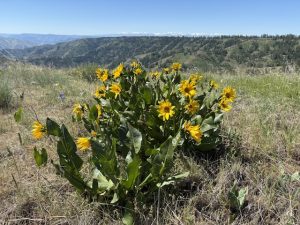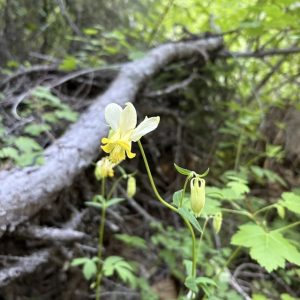 The Columbia City Yoga on-line Moving into Meditation class met this morning. Hearing one another’s stories can help to tenderize the heart. When we recognize our shared joys and sorrows compassion arises. The space of loving awareness offers us the possibility of feeling deeply and opening the heart. To work for a better future, poet Jane Hirshfield suggests: “people turn to one another for shared witness, for shared restoration, shared beauty.”
The Columbia City Yoga on-line Moving into Meditation class met this morning. Hearing one another’s stories can help to tenderize the heart. When we recognize our shared joys and sorrows compassion arises. The space of loving awareness offers us the possibility of feeling deeply and opening the heart. To work for a better future, poet Jane Hirshfield suggests: “people turn to one another for shared witness, for shared restoration, shared beauty.”
We heard from poet Jane Hirshfield’s essay, Poems in a Time of Crisis, Part Two: Tenderness. Jane points to art and poetry to help – in her words – “undo fixity and despair, [to] increase possibility-sense and enlarge a person’s condition of being: tenderness, humility, courage, and resilience.” Creativity and imagination can help to broaden our perspective and choose hope.
We heard Maria Popova’s poem, The Purple Martin, from The Almanac of Birds: Divinations for Uncertain Days. In this lovely poem Maria describes hope as “a motion of the heart.” Given imagination and time we can choose hope over despair.
Welcome. In our last class we explored the meaning of spiritual friendship. We drew inspiration and insight from: nature lovers, philosophers, poets, teachers and writers. Their work reflected many relational ways we find supportive kinship.
Last week I travelled to visit kin in the beautiful Wallowa Mountains. My journey took me over 600 miles, through the Cascade and Blue mountains; through farm and ranch lands, over the great Columbia and countless other rivers. The Wallowa Valley is incredibly beautiful sits in the northeastern corner of Oregon. It’s pretty remote; there are far more non-humans than humans. I could feel my whole being becoming more open and spacious. Even the rugged trails and cascading waterfalls seemed welcoming.
 Sharing this beauty with my brother was one of the most wonderful experiences I’ve ever had with him. In the gradual time of walking up steep trails memories and life stories surfaced. Since our early separation as kids, we had so much to learn about each other. My brother’s life stories held many years of adventure and misadventure. There were years of homelessness and vagabonding, itinerant work and loneliness. And there were the stories of caring people who helped him. And most importantly – there was the love story that saved him which continues to this day.
Sharing this beauty with my brother was one of the most wonderful experiences I’ve ever had with him. In the gradual time of walking up steep trails memories and life stories surfaced. Since our early separation as kids, we had so much to learn about each other. My brother’s life stories held many years of adventure and misadventure. There were years of homelessness and vagabonding, itinerant work and loneliness. And there were the stories of caring people who helped him. And most importantly – there was the love story that saved him which continues to this day.
His stories live in my heart. They tenderize it. They wake me up at night and I grieve. Compassion arises as tears flow. This heart opening reminded me that my brother’s story is one of countless others. Each of those others are precious beings worthy of love. Each being holds potential and promise. They deserve to flourish and be free.
Upon returning home I also returned to the civil unrest in our country and the war making in the world. I resolve to bear witness; keep my heart open and seek to understand. I turned to poet Jane Hirshfield who writes about tenderness in our troubled times.
. . . in a time that feels a ceaseless and relentlessly expanding assault – on compassion, interconnection, and kinship; on facts and science; on founding principles; on common sense – I’ve been turning . . . to works by others who’ve lived through crises for help in keeping open my own breadth of seeing, feeling, perspective. I’ve turned also, at times, to works offering oasis – glimpses of beauty, comedy, sometimes even distraction – for their balance-keeping reminder[s] . . .
 In duress, between times of action, people turn to one another for shared witness, for shared restoration, shared beauty. . . .
In duress, between times of action, people turn to one another for shared witness, for shared restoration, shared beauty. . . .
To work for a better future, you need first to survive. Then you need to find some way to get through each day, then the next, without being spiritually and emotionally flattened. Unflattening is one of art’s tasks. Singing changes what might seem unbearable into a weight shared with others. Each voice’s added texture and improvised harmony confirms the promise that every individual brings to communal grief or fear their singular, irreplaceable part. Brings also the promise that new notes, new interpretations, new ways of seeing and feeling can always be found.
Each of us have a song to sing. Together we can realize an improvised harmony in which every voice belongs. I sense this is why we come together in practice.
 Many of us have been experiencing near hopelessness. Most of us are grieving some form of loss. We have witnessed suffering here in our country and throughout the world. And yet just bringing ourselves here today is an act of hope. As Vaclav Havel says hope is a state of mind, an orientation of the spirit, an orientation of the heart. It isn’t a fragile hope that some day things will be better and then we will be happy.
Many of us have been experiencing near hopelessness. Most of us are grieving some form of loss. We have witnessed suffering here in our country and throughout the world. And yet just bringing ourselves here today is an act of hope. As Vaclav Havel says hope is a state of mind, an orientation of the spirit, an orientation of the heart. It isn’t a fragile hope that some day things will be better and then we will be happy.
Jane points to art and poetry to help – in her words – “undo fixity and despair, [to] increase possibility-sense and enlarge a person’s condition of being: tenderness, humility, courage, and resilience.”
I invite you to take some moments to reflect on the hope that is alive in your heart today.
 Let us practice so that we might find insight beyond what we think we know; so that we might find wisdom, connection and express our tenderness. Now I invite you to let these many words and ideas land where they will. Adjust your position as you need to be at ease. You might do a brief stretching movement and take a few deeper breaths. As you settle into stillness let the breath resume its natural way. Notice the inhales and the exhales.
Let us practice so that we might find insight beyond what we think we know; so that we might find wisdom, connection and express our tenderness. Now I invite you to let these many words and ideas land where they will. Adjust your position as you need to be at ease. You might do a brief stretching movement and take a few deeper breaths. As you settle into stillness let the breath resume its natural way. Notice the inhales and the exhales.
As you’re ready, begin to move awareness through your body. Notice any tension and relax whatever you can over the brow, jaw and mouth. Your neck and upper back. Feel around your shoulders, down your arms and through your hands. Release whatever you can. Feel around your chest and belly. Your spine and pelvic bowl. Feel around your hips, down your legs and into your feet. Sense your whole body as it breathes. Sense your being. Here, now.
You might notice thoughts and emotions that are present. There may be a sense of hurting, fear or anger. There may be emptiness or numbness. There may be whispers of judgment. Can you breathe with what surfaces? Can you offer time and space to truly feel? Is it possible to feel these feelings and also the larger spaciousness of loving awareness?
 Sense what being here truly feels like. You might notice where feelings emerge from. Perhaps the source is a deeper love and concern. A vital caring or compassion. You might offer yourself kindness. You could lightly rest your hands over your heart. As you breathe in, imagine the breath is softening the area around your heart or any other area in need of soothing. You might repeat silently to yourself, “It’s OK.” As you breathe out, take your time and imagine letting go of any tension around the heart and repeat, “This is enough,” It’s O.K. It’s enough. Can your inner voice be patient, soothing and loving? Repeat this for a few slow breaths and stop when you feel ready. Relax your arms and hands.
Sense what being here truly feels like. You might notice where feelings emerge from. Perhaps the source is a deeper love and concern. A vital caring or compassion. You might offer yourself kindness. You could lightly rest your hands over your heart. As you breathe in, imagine the breath is softening the area around your heart or any other area in need of soothing. You might repeat silently to yourself, “It’s OK.” As you breathe out, take your time and imagine letting go of any tension around the heart and repeat, “This is enough,” It’s O.K. It’s enough. Can your inner voice be patient, soothing and loving? Repeat this for a few slow breaths and stop when you feel ready. Relax your arms and hands.
Relax however you can. Breathe and sense yourself in the river of time. Each moment bringing aliveness that is moving and changing. See if you can attune to the essential goodness, the worthiness of your being – the sense that you matter. Sense your being here, your body touching Earth’s body.
 Notice how these words land in your heart. Is it possible to keep the heart space of compassionate attention open? When the heart closes can you breathe and feel? Can you offer self-kindness until it can open again? We realize compassion when we can recognize that this suffering is not ours alone. We might find hope in sensing the dear friends and the hearts they bring to practice today. Here is Maria Popova’s poem, The Purple Martin, from The Almanac of Birds:
Notice how these words land in your heart. Is it possible to keep the heart space of compassionate attention open? When the heart closes can you breathe and feel? Can you offer self-kindness until it can open again? We realize compassion when we can recognize that this suffering is not ours alone. We might find hope in sensing the dear friends and the hearts they bring to practice today. Here is Maria Popova’s poem, The Purple Martin, from The Almanac of Birds:
hope is a motion of the heart
fastened with courage
not a feeling or idea
but a choice
a choice not to suffer
the shortness of sight
that is despair
a choice to live
in harmony with time
for time is tenacious
and never finished
and in its peaceful labour
far more prodigious
than us at imagining
the next great astonishment

